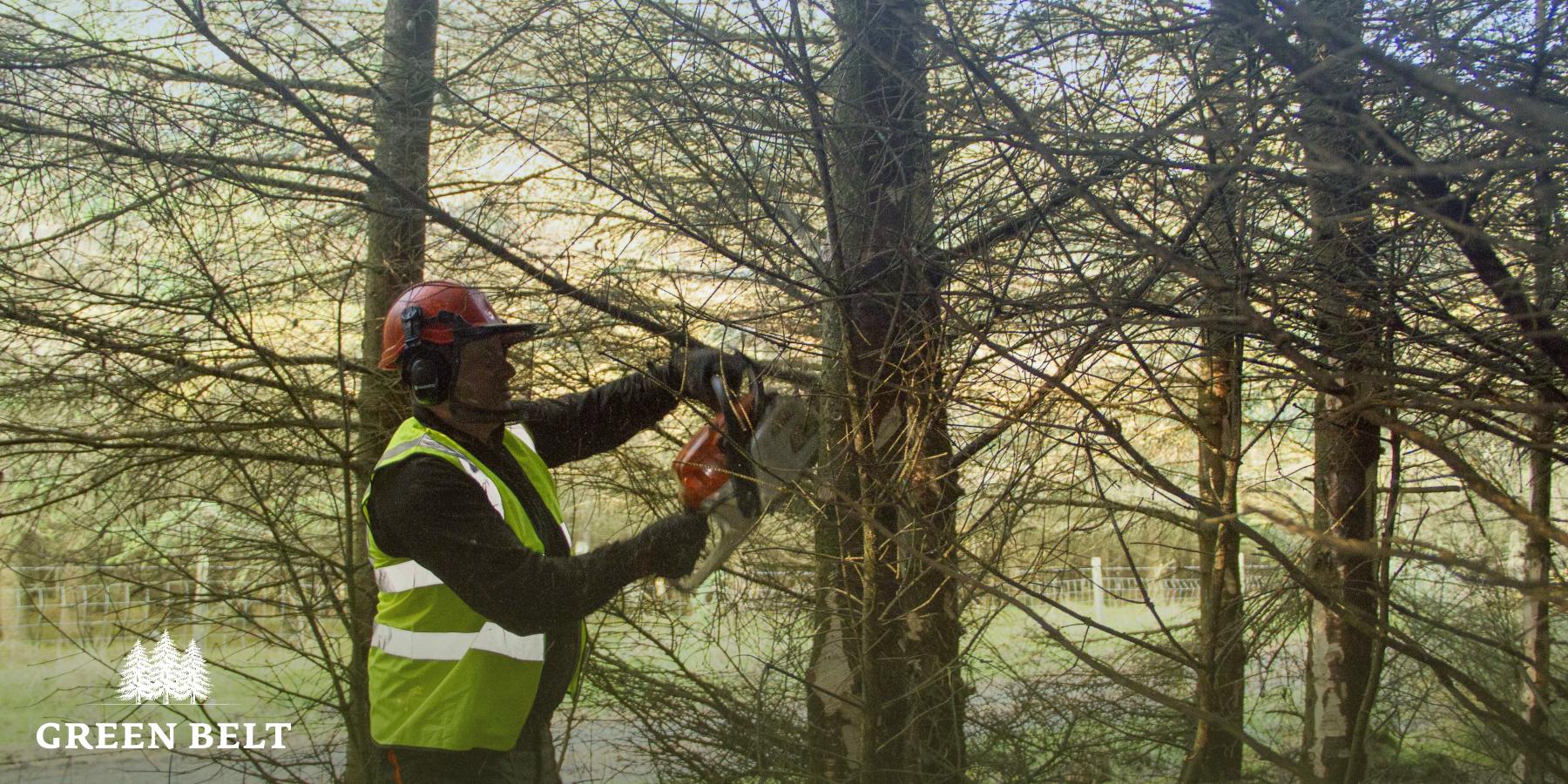
Thinning & Harvesting
Thinning is an essential maintenance procedure for forests and it will enhance the future growth and production of your plantation towards clearfell. Thinning is the removal of a proportion of the trees in a crop. In a typical Sitka Spruce plantation, less then 20% of the initial stocking is left at clearfell. By removing smaller weaker trees the remaining trees are left with more light and room to grow to their full potential. The trees which are removed can be sold to make a variety of products such as fence posts, paper, pallets or MDF.
Thinning is an essential part of any farm forestry investment. If properly carried out, thinning:
- optimises the return from your forest crop
- provide periodic returns as the crop matures
- Improves the biodiversity of the forest
Green Belt will firstly assess your forestry to see is it time to thin. If your forestry plantation is approaching 20 years of age, it might be ready for first thinning. For semi mature forestry, it can be difficult to accurately assess the forest in totality pre thinning. By utilising drone technology, we can stratify the forest and focus our inspection paths and routes for detailed measurement. This data will be gathered and processed to deliver up to date information and allow accurate projections for timber harvesting and revenues.
Green Belt will apply for your tree felling licence (TFL) and consider access to the plantation. If required, Green Belt's qualified roads engineer will design and oversee the construction of the road, ensuring that the road costs comes in at the grant level.
Green Belt supervises the tree felling operations and monitors the timber as it leaves, removing the timber immediately to prevent weight loss and theft and installing security cameras on site to monitor operations.
When do I thin my plantation?
The first thinning of a plantation is usually carried out when the trees have reached at least 8m in height or between 12 and 20 years old for a fast growing species e.g. spruce and 20-30 years for other species. The decision to thin is often a compromise between waiting until the thinnings are large enough to maximise the return and not delayed so long that the growth potential of the remaining trees is affected by competing growth.
How is thinning carried out?
The first step is to cut inspection racks through your plantation. These racks are basically pathways through the plantation, where a forester can inspect the trees form and establish the growth rate of the trees. Once the growth rate of the trees has been established, the Green Belt forester can recommend the type of thinning which should be carried out.
How much do I thin?
Once the type of thinning has been agreed, the thinning intensity is worked out. The amount of timber removed is dependent on the species of tree and the rate at which it is growing. The calculations involved are somewhat longwinded but in general, Green Belt remove the right amount of timber to make the operation profitable without adversely affecting the productivity and stability of the remaining trees.
How often should I thin my plantation?
The frequency of thinning is a balance between making the operation profitable while maximising the value of the remaining crop. For example; thinning operations are carried out every three years on fast growing spruce. The Green Belt forester will establish the frequency of thinning and will also find the best market for your thinnings.